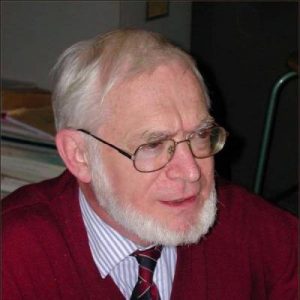 The Laboratoire Kastler Brossel, its colleagues and friends, are saddened to announce the death of Bernard Cagnac, who passed away on July 3, 2019.
The Laboratoire Kastler Brossel, its colleagues and friends, are saddened to announce the death of Bernard Cagnac, who passed away on July 3, 2019.
Bernard Cagnac had an exemplary scientific career in atomic physics, developing spectroscopic methods that opened an entire domain of research in precision optical measurements. After his thesis during which he performed the first optical pumping experiments under the joint direction of Alfred Kastler and Jean Brossel, Bernard Cagnac was named assistant professor and then professor at Orsay, before returning to the laboratory in 1967. He arrived just as the new science campus opened in Paris, which replaced the “Halle aux Vins” at Jussieu. He built-up his research at Jussieu, becoming one of the founding fathers of this new site which today represents half of the laboratory.
The advent of dye lasers allowed him to continue to develop his highly creative and original ideas, and to start a new line of research based on multiphotonic atomic transitions. The two-photon, Doppler-free spectroscopy method that he proposed and developed was used extensively to study atomic hydrogen and to make some of the most precise measurements of fundamental constants, like the Rydberg constant. He founded and was group leader for many years of the team of “Metrology of simple systems and fundamental tests” at the laboratory. His work inspired numerous experimental and theoretical advances in the domain of optical measurements for metrology, salient themes that are enjoying renewed interest today in light of the proton radius puzzle.
Bernard Cagnac was also known to be an unparalleled professor, much appreciated for his dynamism and enthusiasm, who formed generations of students in atomic physics. He knew how to make accessible extremely complicated concepts, and developed classroom demonstrations centered around his laser research in the laboratory. He was rigorous and upheld high standards of precision and pedagogy as can be seen first-hand in the two physics textbooks that he co-authored on atomic physics and lasers. More recently, he wrote two books that are very dear to us at the laboratory—one on Alfred Kastler, 1966 Nobel prize in physics, and the other on the three founders of the physics laboratory of the École Normale Supérieure, Henri Abraham, Eugène Bloch, and Georges Bruhat.
His engagement for the university community was exemplary. He was very involved in the experimental physics courses, and served as the driving force behind the laser instrumentation center at Jussieu, a project that he defended for years before it could be made a reality. He was greatly concerned with the professional development of the students and created what would be called today a professional Master’s program. Generous of heart, he knew how to defend the interests of students, for example serving as the director of the CIES de Jussieu (Center for Initiation to Higher Education). He was also president of the French Physical Society (SFP) from 1980 to 1981, member of the first national committee of university evaluations under the presidency of Laurent Schwartz from 1985 to1989, president of the Optical Institute from 1990 to 2000, and president of the EGAS (European Group for Atomic Spectroscopy) from 1980 to 1982.
Everyone who knew Bernard Cagnac, as he still came into the laboratory regularly up until a few years ago, remembers him as a man of passion, curious about all things scientific, and curious about all things in general. He was a man of character and joy who shared this joy with all those around him.
Our thoughts go out to his wife Janine, his children, and all his family. His funeral was celebrated on July 9th, and he was buried at the family cemetery in Corrèze.
Antoine Heidmann and Bernard Cagnac’s research team
The burial took place on Wednesday 10 July at 11 a.m. at the family cemetery in Treignac in Corrèze.

